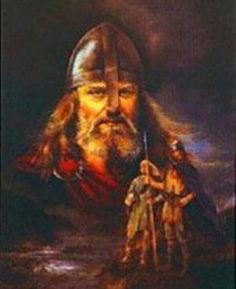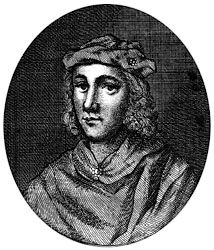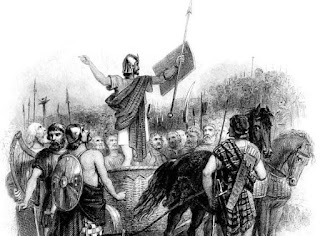Scottish Saints
In the steps of the Saints
St Mungo, Glasgow Cathedral:
St Mungo, meaning 'dear beloved'
was originally known as Kentigern. He founded a church by the Molindar burn in Glascu, 'the green hollow', giving modern Glasgow its name. His shrine lies in the crypt of the cathedral. Legend says he was born to St Thenew, later renamed as St Enoch after whom the railway station and shopping centre are named.
St Conval, Inchinnan New Parish Church, Renfrewshire:
Conval is said to have prayed with such power, that a block of granite known as 'St Conval's Chariot' carried him across the Irish Sea and up the Clyde. The stone, which is part of a collection of Christian stones at the church, is said to heal humans and cattle.
St Ethernan, Isle of May, Fife:
Ethernan died among the Picts in 669. His grave on the Isle of May became a place of pilgrimage and the site of a series of monastic buildings that can be seen today. Boats trips leave daily from Anstruther, May/ September.
St Mael Rubha, Isle of Maree, Loch Maree, Ross and Cromarty:
Mael Rubha, founded an important monastery at Applecross. Later he is said to have lived as a hermit on the Isle of Maree in Loch Maree, where he is also reputed to be buried. However, Applecross village and Syre in also claim his grave.
St Machar, Aberdeen:
Probably a local Pict, Machar saw the shape of a crozier in a bend of the River Don, leading him to found Aberdeen's first church. One of the city's cathedrals is now dedicated to him.
St Cuthbert, Old Melrose, Roxburghshire:
Cuthbert, a shepherd from Oxton joined the monastery of Old Melrose after a vision.
The site of this monastery can best be seen from Scott's view on the B6356, cast of Melrose. Later Cuthbert went on to be Abbot of Lindesfarne in Northumbria. Melrose Abbey is now the starting point of the St Cuthbert's Way to Lindisfarne.
St Miren, Paisley Abbey:
St Miren a noble Irish monk, who came to Scotland around 600 AD. His cult grew after his death, leading to the founding of Paisley Abbey in 1169AD. Its pilgrim chapel, created in 1499, has sculpted panels illustrating the life of the saint.
St Moluoc, Lismore island, Loch Linnhe, Argyll:
Legend says Moluoc cut off his finger and threw it ashore to beat St. Columba to landfall. He founded a monastery on an island he called Lios Mor, meaning "enclosure' or 'great garden".
St Ninian, Whithorn, Wigtownshire:
Ninian's Cathedral-Priory, a museum and various excavated structures mark what was once an important pilgrimage site. St Ninian's Cave-possibly a devotional retreat used by St Ninian – can be reached by parking at Kidsdale, three miles south west of Whithorn, and walking one mile down the glen to the beach. To visit St Ninian Chapel on the Isle of Whithorn, follow the footpath to the headland.












Comments
Post a Comment